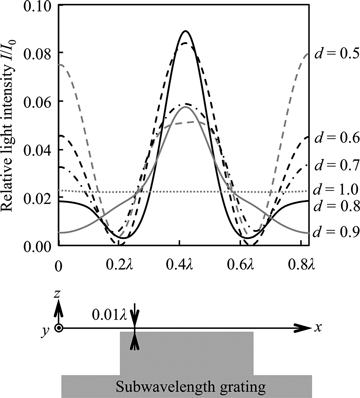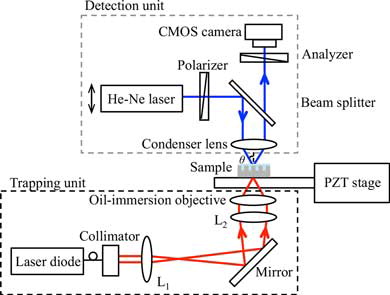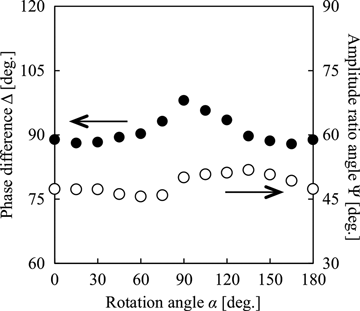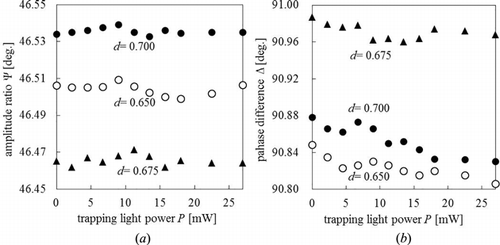Figures & data
Figure 1. Schematic explaining the principle of the trapping of nanoparticles by periodically localized light generated on a subwavelength grating of period D < λ, where the wavelength of the incident light is λ.
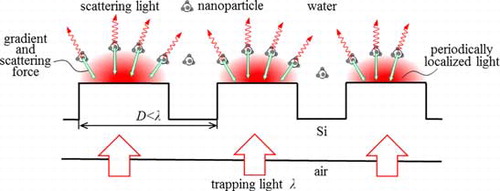
Figure 4. Simulated relative light intensity distribution for subwavelength gratings. Panel (a) presents the FDTD model. Panels (b) to (g) are the results for the region inside the dotted square in panel (a) for the indicated duty ratios d.
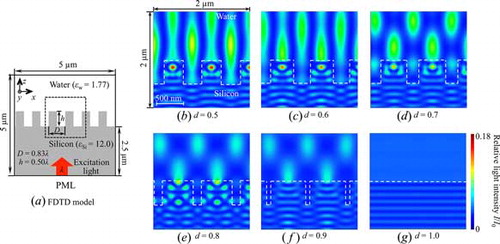
Figure 5. Plot of the light intensity just above the grating as a function of distance along the x axis for various duty ratios d. The intensities are normalized relative to that of the incident light.
